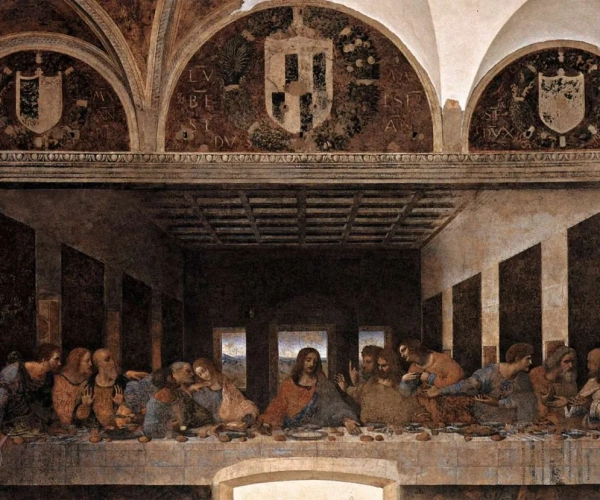The Last Supper (2) 1498
Leonardo da Vinci's masterpiece, "The Last Supper," is a profound depiction of the biblical event where Jesus reveals that one of his apostles will betray him. Completed in 1498, the artwork is a fresco that covers the wall of the refectory at the Convent of Santa Maria delle Grazie in Milan, Italy. The scene is rich with emotion and symbolism, capturing the reactions of the apostles as they learn of Jesus' impending betrayal.
The composition is a study in psychological tension and human emotion. Da Vinci's masterful use of perspective draws the viewer's eye to the central figure of Jesus, whose calm presence contrasts with the frenzied reactions of the apostles. Each apostle displays a unique response, ranging from shock and disbelief to anger and sorrow, creating a dynamic and gripping narrative.
The painting's technical brilliance is evident in the meticulous attention to detail, from the drapery of the apostles' clothing to the play of light and shadow. Da Vinci's skillful use of chiaroscuro further heightens the drama of the scene, emphasizing the contrasting emotions of the figures.
"The Last Supper" stands as a testament to da Vinci's innovative approach to composition and his ability to convey complex narratives through visual storytelling. The artwork's enduring impact on art and culture is a testament to its timeless relevance and the enduring power of da Vinci's artistic vision.
In conclusion, "The Last Supper" is a monumental work of art that continues to captivate and inspire audiences with its profound emotional depth and technical mastery.







No Comments Yet...